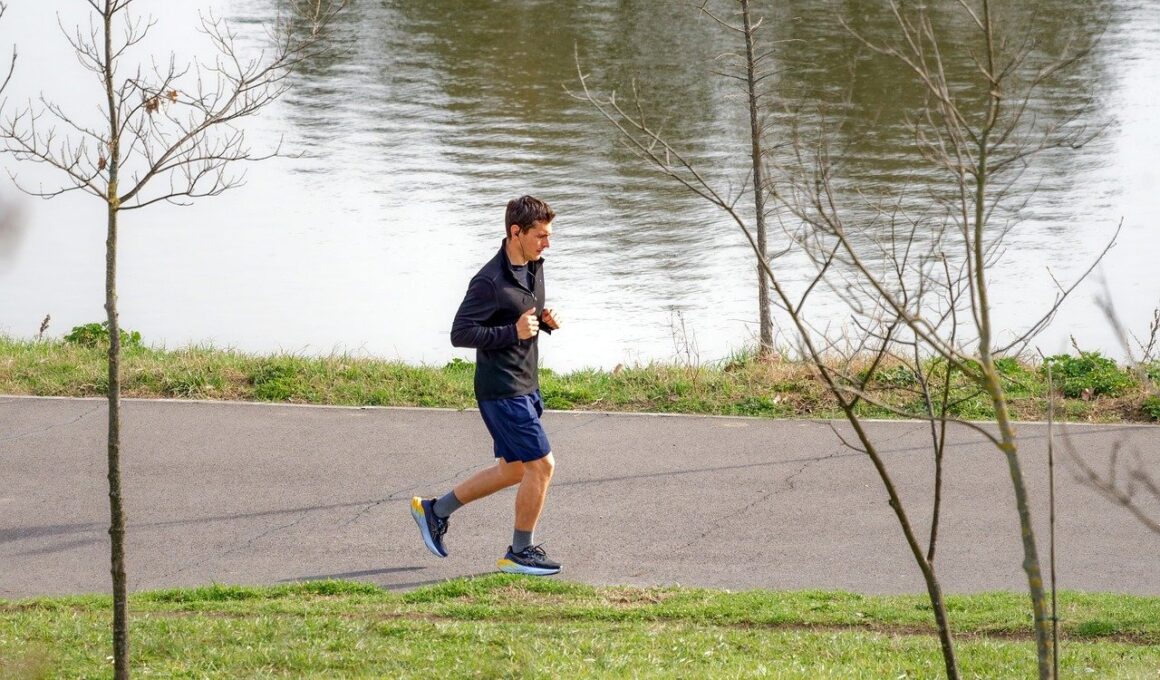Urban Parks: Natural Gyms for Community Well-being
Urban parks serve as pivotal spaces that enhance community wellbeing and promote physical health. These green areas offer residents a natural alternative to traditional gyms, allowing individuals to engage in various fitness activities amidst aesthetic surroundings. With the rising importance placed on mental and physical health, urban parks solve the pressing need for accessible fitness options in city environments. These parks often feature walking trails, fitness stations, and open green spaces that facilitate casual group sports gatherings. Moreover, they provide a community-focused environment where people can interact while maintaining their fitness goals. Furthermore, these parks reduce the stress associated with urban living, presenting a serene setting for outdoor exercise. By incorporating natural elements such as trees and water bodies, urban parks offer a refreshing escape from concrete structures. This transformation of vacant land into vibrant parks significantly boosts community engagement, offering numerous workshops, fitness classes, and activities. People of all ages can enjoy family-friendly events, encouraging a communal approach to health. Hence, urban parks not only promote fitness but also foster social connections within neighborhoods, contributing to the overall well-being of the community.
The Health Benefits of Urban Parks
Spending time in urban parks is linked to numerous health benefits for individuals of all ages. Regular engagement in physical activities such as jogging, cycling, or yoga significantly enhances cardiovascular health and promotes weight management. Fresh air and natural landscapes help to reduce anxiety and foster a sense of calm, thereby improving mental health. Another key benefit is the opportunity for social interactions that urban parks facilitate, allowing individuals to form friendships while exercising. These social bonds are crucial for mental well-being, creating a supportive environment for everyone involved. Parks often host organized sports leagues and fitness classes that cater to diverse interests, motivating people to stay active. Additionally, parks often feature green spaces for more leisurely activities including picnics, family outings, and relaxation. As such, individuals can achieve a balance between physical exertion and leisure. Natural environments have been shown to increase mood and decrease feelings of depression. By providing a sanctuary where residents can escape urban pressures, urban parks encourage more significant community involvement, further cultivating shared goals for better health across populations. Ultimately, these precious green spaces enhance the quality of life in urban areas.
Urban parks play a crucial role in promoting an active lifestyle, which is especially important as urbanization and sedentary behavior increase. These parks encourage physical activity through their design and facilities, providing various options for fitness enthusiasts. For instance, walking paths, designated cycling routes, and exercise equipment invite residents to use these areas for structured workouts. Furthermore, parks often include spaces for community sports, such as soccer fields and basketball courts, creating opportunities for group activities. Engaging in group sports fosters teamwork while motivating individuals to push their limits, thus improving their fitness levels. Through organized fitness events, parks can attract attention to the importance of active living while allowing residents to socialize with like-minded health-conscious individuals. The accessibility of these recreational areas means people can easily integrate fitness routines into their daily lives without incurring gym fees. In addition, parks promote family fitness by providing inclusive activities that cater to all ages. From playgrounds to running circuits, families can bond over physical activities, encouraging healthier lifestyles together. Consequently, urban parks become essential community resources that support not only individual fitness but also collective health in urban settings.
An important function of urban parks is their potential to foster environmental awareness and sustainability. Green spaces contribute to biodiversity by offering habitats for various species, from birds to insects, within urban areas. These parks often serve as educational platforms where children and adults can learn about the local ecosystem and the importance of environmental conservation. This knowledge is vital, particularly in cities where natural education is often overlooked. Many parks implement community gardens, allowing locals to engage with nature directly and understand sustainable practices. Such initiatives not only promote environmental health but also encourage organic food production among residents. Classes on horticulture and biodiversity in parks can transform public perceptions about nature and sustainability. In this way, urban parks can become centers for environmental activism, promoting initiatives like tree planting and clean-up days. Additionally, engaging citizens in preserving local parks can lead to a greater appreciation for the environment. By integrating educational aspects focused on ecology and sustainability, urban parks help paint a picture of the essential role nature plays in urban life and individual wellbeing. Such awareness can spark long-term commitments to sustainable practices among community members, creating a healthier urban environment.
Community Engagement Through Urban Parks
The role of urban parks extends beyond promoting fitness and environmental awareness; they also significantly contribute to community engagement. Parks serve as gathering spaces where residents come together, fostering social ties within neighborhoods. They often host festivals, movie nights, and farmer’s markets, providing residents with opportunities to connect and engage in communal activities. This sense of belonging strengthens social fabric within communities, as individuals invest time and effort into local endeavors. Regular interactions with neighbors in parks can lead to increased community cooperation, where people unite to tackle shared challenges such as littering and park maintenance. Additionally, parks often involve volunteers who assist in the upkeep and organization of events, thus enhancing civic pride. Through various programs and workshops, urban parks provide platforms for citizens to voice concerns, thereby allowing local authorities to remain attentive to community needs. Such initiatives not only benefit park infrastructure but also empower residents and encourage participation in decision-making processes. Ultimately, the continuous engagement fostered by urban parks results in more cohesive and vibrant communities, showcasing the importance of collective efforts in creating flourishing urban spaces.
Urban parks represent vital underrepresented resources within cities, bridging the gap between fitness and active community participation. They offer unique opportunities for all age groups while addressing various needs, from recreation to relaxation. Practical activities such as tai chi classes can attract senior citizens looking for gentle fitness routines. Meanwhile, playgrounds and sports courts are fundamental for children and teenagers to develop essential motor skills and teamwork. Additionally, urban parks provide spaces for fitness newcomers to gradually acclimate to physical activity in non-intimidating settings. This accessibility encourages those who may feel out of place in traditional gyms to engage in physical fitness naturally. In addition, offering diverse activities attracts a broad demographic and fosters inclusivity, allowing everyone to participate regardless of background or fitness level. Community art projects can add psychological benefits, bringing a sense of identity through local creative expressions. Consequently, urban parks respond to evolving societal needs while establishing their roles as integral to modern urban planning. As the world evolves, parks will continue to adapt, serving as valuable assets that support sustainable health and wellness practices for entire communities.
In summary, urban parks are essential to enhancing community well-being through various dimensions including fitness, social interaction, and environmental awareness. Their design fosters healthy habits, encourages group activities, and gives rise to educational initiatives focused on sustainability. Furthermore, parks serve as vital venues for citizens to engage with one another while collectively addressing challenges within their neighborhoods. They create a nurturing environment where individuals can discover paths to a healthier lifestyle in tune with nature. The diversity of offerings within urban parks ensures that everyone can find activities that resonate with their interests and needs. As such, continuous investment in the development and upkeep of parks remains crucial. Local governments must recognize the multifaceted role these parks play, prioritizing funding and resources to maintain their accessibility and potential. By fostering community input in park planning, authorities can ensure that green spaces truly reflect the needs and preferences of the populations they serve. Ultimately, urban parks stand out as powerful tools to bridge the gap between wellness and environmental stewardship, solidifying their role as indispensable components of modern urban living.
In conclusion, urban parks stimulate community interaction, promote fitness, and set a precedent for environmental responsibility. Investing in the development and sustainability of these natural gyms supports a holistic approach to health while nurturing healthy communal ties. Consequently, creating vibrant parks that cater to diverse populations is essential. Emphasizing broad accessibility encourages wider participation, fostering environments where wellness thrives. Without a doubt, urban parks serve not only as places for physical activity but also as essential spaces that enrich community life. As cities continue to grow, prioritizing urban green spaces will be vital for sustaining vibrant communities. Well-designed parks will help mitigate the adverse effects of urban living while providing sanctuaries for residents seeking respite and recreation. Moreover, supporting ecosystems within city limits enhances biodiversity, demonstrating the commitment to a greener future. By embracing the interrelationship between health, community, and nature, urban parks pave the way for innovative, nature-based solutions that tackle urban challenges effectively. In summary, a collective effort is needed to harness the health and environmental benefits offered by urban parks, making them fundamental assets for all urban dwellers.


